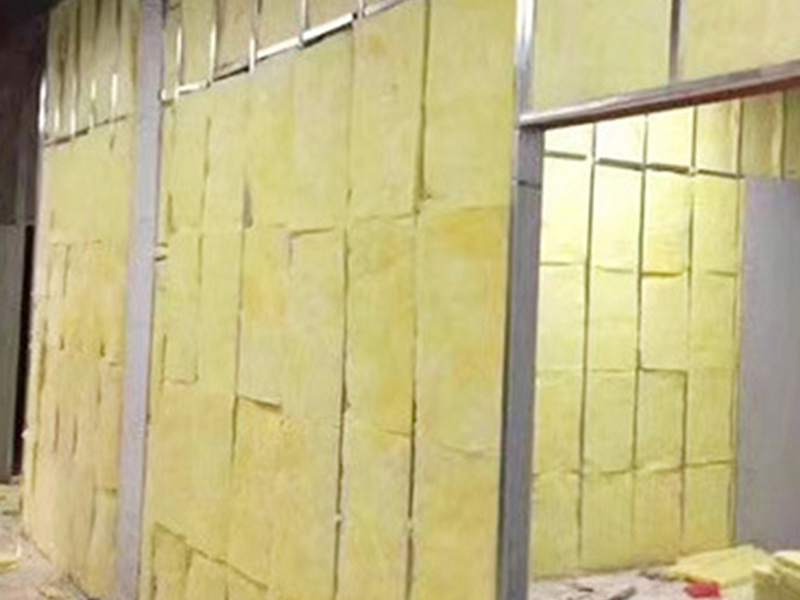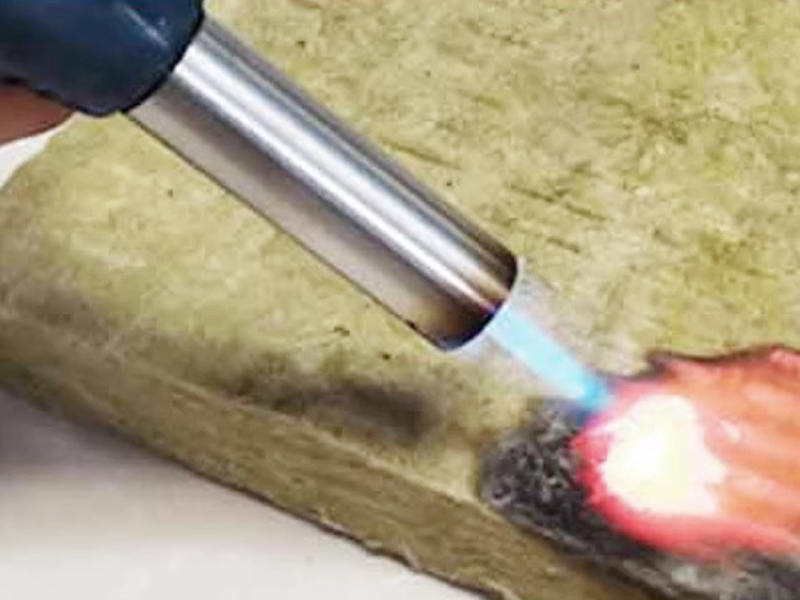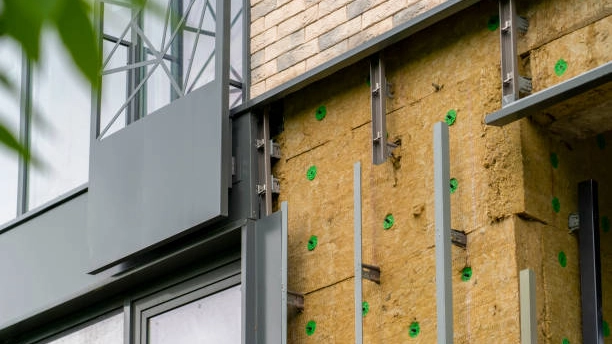Rock Wool Insulation vs Fiberglass: Which One is Better for Your Needs?
Discover the key differences between rock wool insulation and fiberglass with FUNAS. Our in-depth comparison helps you choose the best option for your needs. Whether you prioritize efficiency, cost, or sustainability, understanding "rock wool insulation vs fiberglass" will guide you to the perfect solution. Make an informed decision with FUNAS today!
- Preface
- What is Rock Wool Insulation?
- Overview of Rock Wool
- Key Benefits of Rock Wool
- What is Fiberglass Insulation?
- Overview of Fiberglass
- Key Benefits of Fiberglass
- Rock Wool vs Fiberglass: Key Differences
- R-Value and Thermal Efficiency
- Fire Resistance
- Installation Process: Ease and Cost
- Rock Wool Installation
- Fiberglass Installation
- Environmental Impact and Sustainability
- Rock Wool Sustainability
- Fiberglass Sustainability
- FAQs About Rock Wool vs Fiberglass Insulation
- Conclusion
Preface
When it comes to insulating your home or commercial building, choosing the right material is crucial. Among the most popular options are rock wool insulation and fiberglass insulation. While both are effective at reducing heat transfer and noise, their properties and performance can differ significantly. Understanding these differences can help you make an informed decision for your project.
In this blog, we’ll explore the key differences between rock wool insulation and fiberglass insulation, comparing factors such as R-value, fire resistance, environmental impact, and installation ease. Let’s dive into the details so you can decide which insulation type best suits your needs.
What is Rock Wool Insulation?

Overview of Rock Wool
Rock wool insulation, also known as mineral wool, is made from volcanic rock or basalt. The rock is melted at high temperatures and then spun into fibers, creating a dense, durable material. This insulation is highly praised for its excellent thermal performance and soundproofing capabilities.
Key Benefits of Rock Wool
- Fire Resistance: One of rock wool’s standout features is its fire resistance. It can withstand extremely high temperatures without melting or releasing harmful gases, making it a top choice for fire safety.
- Sound Insulation: Rock wool excels in noise reduction, which makes it an ideal option for both residential and commercial buildings that require acoustic insulation.
- Moisture Resistance: Unlike fiberglass, rock wool does not absorb water, which helps prevent mold and mildew growth in damp areas.
What is Fiberglass Insulation?

Overview of Fiberglass
Fiberglass insulation is made from fine glass fibers and is commonly used in both residential and commercial applications. It is typically found in batt or roll form but can also be found as loose-fill or spray foam for specific uses. This insulation is known for being lightweight and relatively easy to install.
Key Benefits of Fiberglass
- Energy Efficiency: Fiberglass has a high R-value, meaning it offers good thermal resistance, which helps keep homes warmer in winter and cooler in summer.
- Cost-Effective: Fiberglass insulation is generally more affordable than other insulation materials, making it an attractive option for budget-conscious consumers.
- Widely Available: Fiberglass is easily available in many forms and can be used in a variety of applications, from attics to walls.
Rock Wool vs Fiberglass: Key Differences

R-Value and Thermal Efficiency
Both rock wool and fiberglass are effective at insulating buildings, but rock wool typically has a slightly higher R-value. The R-value is a measure of the material's ability to resist heat flow. Higher R values indicate better insulating properties.
Rock Wool: R-value typically ranges from 3.0 to 3.7 per inch of thickness.
Fiberglass: R-value typically ranges from 2.9 to 3.7 per inch of thickness.
While the R-values are similar, rock wool's denser composition may provide better performance in colder climates or when soundproofing is a priority.
Fire Resistance
Rock Wool: Has a superior fire rating. It can withstand temperatures up to 1,200°F without catching fire.
Fiberglass: Can resist high temperatures but is not as fire-resistant as rock wool. Fiberglass will melt if exposed to prolonged heat, especially in extremely high temperatures.
Installation Process: Ease and Cost
Rock Wool Installation
Installing rock wool insulation requires care, as the material can be heavier and more rigid than fiberglass. It is generally available in batt or board forms, but some users prefer loose-fill rock wool for attic spaces. Cutting rock wool is possible but can be challenging without proper tools. Additionally, the installation may require protective gear to avoid irritation from the fibers.
Fiberglass Installation
Fiberglass is lightweight and easy to handle, making it simpler to install, especially for DIY projects. It is typically available in batt, roll, or loose-fill form, and it’s easier to cut and shape for different applications. However, fiberglass fibers can be irritating to the skin and lungs, so wearing protective gear is important during installation.
Environmental Impact and Sustainability
Rock Wool Sustainability
Rock wool insulation is often considered more sustainable because it is made from natural, abundant materials like basalt rock. It also has a longer lifespan, contributing to the long-term energy efficiency of buildings.
Fiberglass Sustainability
Fiberglass is made from recycled glass and sand, making it a relatively eco-friendly option. However, its production requires significant energy, and while it is durable, it can take a long time to decompose if not recycled.
FAQs About Rock Wool vs Fiberglass Insulation
1. Is rock wool more expensive than fiberglass?
Yes, rock wool insulation tends to be more expensive due to its manufacturing process, but it offers additional benefits such as better fire resistance and soundproofing.
2. Can I use rock wool insulation in damp areas?
Yes, rock wool is resistant to moisture and is ideal for areas that may experience high humidity, such as basements or bathrooms.
3. Which insulation is better for soundproofing?
Rock wool is the better option for soundproofing due to its dense, fibrous structure, which helps absorb sound.
4. Does fiberglass insulation require a vapor barrier?
In some cases, fiberglass may require a vapor barrier to prevent moisture accumulation, especially in areas like basements or attics.
Conclusion
In conclusion, both rock wool insulation and fiberglass insulation offer distinct advantages, depending on your needs. If you prioritize fire resistance, soundproofing, and moisture resistance, rock wool might be the better option for your project. On the other hand, if you're looking for an affordable, easy-to-install option that provides good thermal insulation, fiberglass is a strong contender.
For those who seek high-quality, sustainable, and effective insulation solutions, FUNAS Insulation offers a wide range of options to meet diverse needs. With a focus on eco-friendly wholesale insulation material and advanced manufacturing techniques, FUNAS is committed to providing long-lasting insulation solutions that enhance the comfort and energy efficiency of any building.

Does Heat Insulation Work? The Ultimate Guide to FUNAS Insulation Solutions
What is the cheapest way to insulate internal walls? | FUNAS Guide
How thick is acousticlining? | FUNAS Guide
What are the disadvantages of thermal insulation? | FUNAS Guide
How much does acousticfoam reduce sound? | FUNAS Guide
FAQ
What types of rubber foam insulation do you offer?
We offer a wide range of rubber foam insulation with different thicknesses and specifications. Thermal insulation material manufacturer FUNAS sleeves and sheets are suitable for different application scenarios.
How do I choose the right insulation for my project?
Our team can help you choose the best material for heat insulation based on your specific needs, such as thermal resistance, acoustic properties, and environmental conditions.
Can your insulation products be customized?
Yes, we offer customized solutions for insulation material wholesale to meet the specifications of your project, including custom specifications, sizes, foils and adhesives, colors, etc.
service
What types of rubber foam insulation products do you offer?
We offer a wide range of rubber foam insulation products, including custom shapes and sizes, thermal and acoustic insulation solutions, and options with specialized coatings such as flame retardancy and water resistance. Our products are suitable for applications in HVAC, automotive, construction, and more.
Are your rubber foam products environmentally friendly?
Yes, our insulation products are designed with sustainability in mind. They help reduce energy consumption by minimizing heat loss and gain, and they are made from durable materials that have a long life cycle, reducing the need for frequent replacement.
You might also like



This product has passed the national GB33372-2020 standard and GB18583-2008 standard. (The product is a yellow liquid.)
Anggu foam phenolic glue is a kind of glue with corrosion resistance, low odor, high strength and excellent brushing property. Can be sprayed for construction with fast surface drying speed, long bonding time, no chalking and convenient operation.

This product has passed the EU REACH non-toxic standard, ROHS non-toxic standard. (The product is black glue.)
Anggu 820glue is a low-odor, high-strength quick-drying glue; Fast drying speed, long bonding time, no powder, non-toxic.
Discover the future of energy efficiency with FUNAS's "Top Thermal Insulation Materials List for 2025." Our expertly curated list highlights innovative solutions perfect for your construction and renovation needs. Stay ahead of the curve with cutting-edge insulation technology designed for optimal thermal performance and sustainability. Trust FUNAS for advancements that redefine comfort and efficiency in every project.
Leave a message
Have any questions or concerns about our products? Please leave us a message here and our team will get back to you promptly.
Your queries, ideas, and collaboration opportunities are just a click away. Let’s start a conversation.


















































